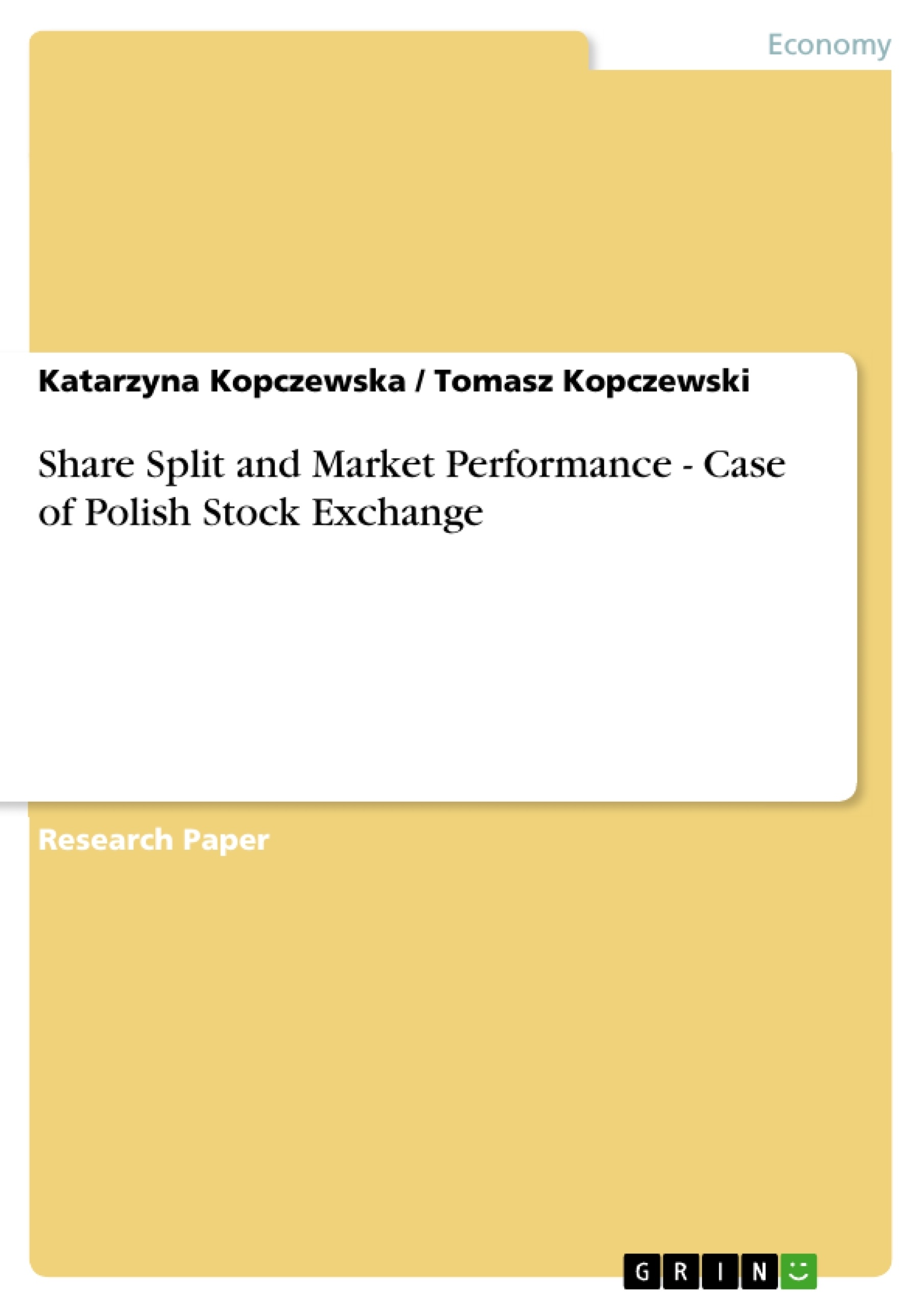The purpose shares split is to divide nominal value in given proportion eg. 2:1, 5:4 etc, what hat involves the proportional reduction of the price Splits are conducted on shares, both traded public and in private turnover. From the rational point of view split should have no other consequences for investors and for share price and should be treated as a cosmetic correction. For shareholders, split changes a nominal amount of shares, but it does not change the value of portfolio. Shareholders rights, Cash Flow and equity of company stay unchanged.
In the history of the world stock exchanges the first shares splits took place in 1927. The earliest research is dated 1933 (Doodley 1933), but the top of popularity splits reached recently, since the ’90. Easley, O”Hara, Saar (2001) report that the most of splits took place in 1997 on NYSE, when about 235 companies made a split. On average about 10% of firms decide each year to lower the share price. Some of companies made a split for many times as e.g. Johnson & Johnson (6 splits since 1970), Bouygues (12 splits since 1979) etc.
The main question of researchers, investors and companies is ” why to make a split?”. Still the explicit motive of split is unknown. There are many hypothesis and case studies in the literature. All appearing hypothesis are clustered around some periods of time. In history of splits there are three main groups to be distinguished:
•Since ’30 up to ’70 - from splits appearance to the market transformation during fuel crisis
•Since ‘70 up to 1998 - form the development of modern financial instruments to the crisis of new technology companies
•Since 1998 up to now and more
Given above classification concerns mainly U.S. market, the most developed one in the world. But one should remember, that this market serves as a indicator of investments mood. It gives a direction of development and influences trends all over the world. So, everything what happens on the U.S. market is also about the rest of the world, but with some time lag.
Inhaltsverzeichnis (Table of Contents)
- Abstract
- Table of Contents
- Introduction
- Share splits hypothesis
- Hypothesis about signaling good perspectives
- Hypothesis of attracting investors
- Hypothesis of optimal price range
- Hypothesis of increase in liquidity
- Hypothesis of split as a marketing tool
- Analysis of share splits in Poland
- Methodology
- Zero order models
- First order models
- Shifts and Pulses
- Share splits on Warsaw Stock Exchange – estimation results
- Conclusions
- References
- APPENDIX
Zielsetzung und Themenschwerpunkte (Objectives and Key Themes)
This paper examines the influence of share splits on share performance and investor behavior on the Polish stock exchange. The research aims to identify how share splits impact security prices and trading volumes, and to understand how Polish investors react to these events.
- Impact of share splits on share performance
- Investor behavior in response to share splits
- Comparison of Polish stock exchange to other markets
- The role of share splits in price correction
- The effectiveness of the Polish stock market
Zusammenfassung der Kapitel (Chapter Summaries)
- Introduction: This chapter introduces the concept of share splits and their historical context. It discusses the rational basis for splits and explores the key questions surrounding their purpose. The chapter also provides a historical overview of share splits, highlighting different periods of time and their associated hypotheses.
- Share splits hypothesis: This chapter examines various hypotheses about the reasons behind share splits. It focuses on the signaling hypothesis, the hypothesis of attracting investors, the optimal price range hypothesis, the liquidity hypothesis, and the marketing hypothesis. The chapter presents both supporting and challenging evidence for each hypothesis from various studies.
Schlüsselwörter (Keywords)
This paper focuses on share splits, their impact on share performance, and investor behavior. Key concepts include intervention analysis, modified CAPM, stock market efficiency, investor reaction, and price correction. The research explores the Polish stock exchange as a case study, comparing its dynamics to more developed markets.
- Citation du texte
- Katarzyna Kopczewska (Auteur), Tomasz Kopczewski (Auteur), 2005, Share Split and Market Performance - Case of Polish Stock Exchange, Munich, GRIN Verlag, https://www.grin.com/document/52848



